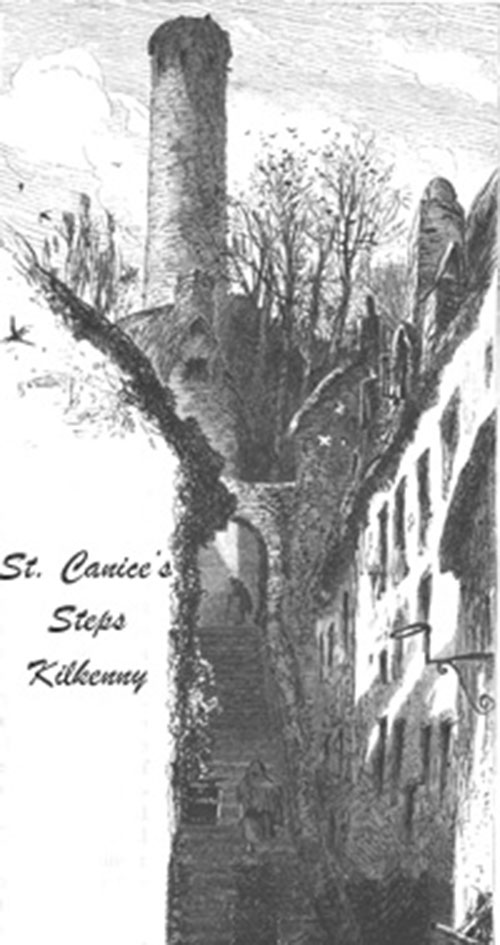Kilkenny - Irish Pictures (1888)
From Irish Pictures Drawn with Pen and Pencil (1888) by Richard Lovett
Chapter IV: From Dublin to Cork … continued
« Previous Page | Start of Chapter | Book Contents | Next Page »
Kildare is a junction for Carlow, Kilkenny and Waterford. The old town of Kilkenny is well worth a visit, because of its fine situation on
The stubborn Newre, whose waters gray,
By faire Kilkenny and Rosseponte boord,
because of the part it has played in Irish history, and because of the architectural treasures it yet possesses.
Well situated on an elevation overlooking the Nore, stands the castle which was originally built by William, Earl of Pembroke, 1195. It was purchased by James Butler, third Earl of Ormonde. In 1399 Richard II. was entertained here, and in March, 1650, Cromwell captured it. Within very recent years it has been thoroughly restored, although for centuries very little of the original building has been in existence.
Kilkenny in its name commemorates one of the early Christian teachers. The name means the Church of Cainnech or Canice, who was born in 517, and died in 600. He was also venerated in Scotland, under the name of Kenneth, and several churches in Argyleshire are named after him. The Cathedral of St. Canice is one of the best in Ireland, and, though named after the saint, is of course of a much later date. It was begun about 1180, and completed in the course of the next century. It is 226 feet long and 123 feet wide at the transepts. From the juncture of the nave and transepts a low but massive tower rises. The cathedral has a very fine western door; it contains many tombs, especially those of members of the Ormonde family. Near the south transept rises a round tower, perfect, with the exception of the conical roof.
Several Parliaments met here, the most notorious being that which passed in 1367 what were known as the Kilkenny Statutes, one of which enacted that marriage with the 'mere Irish' was treason, and that any one using the Irish dress or language should forfeit his lands!
« Previous Page | Start of Chapter | Book Contents | Next Page »

